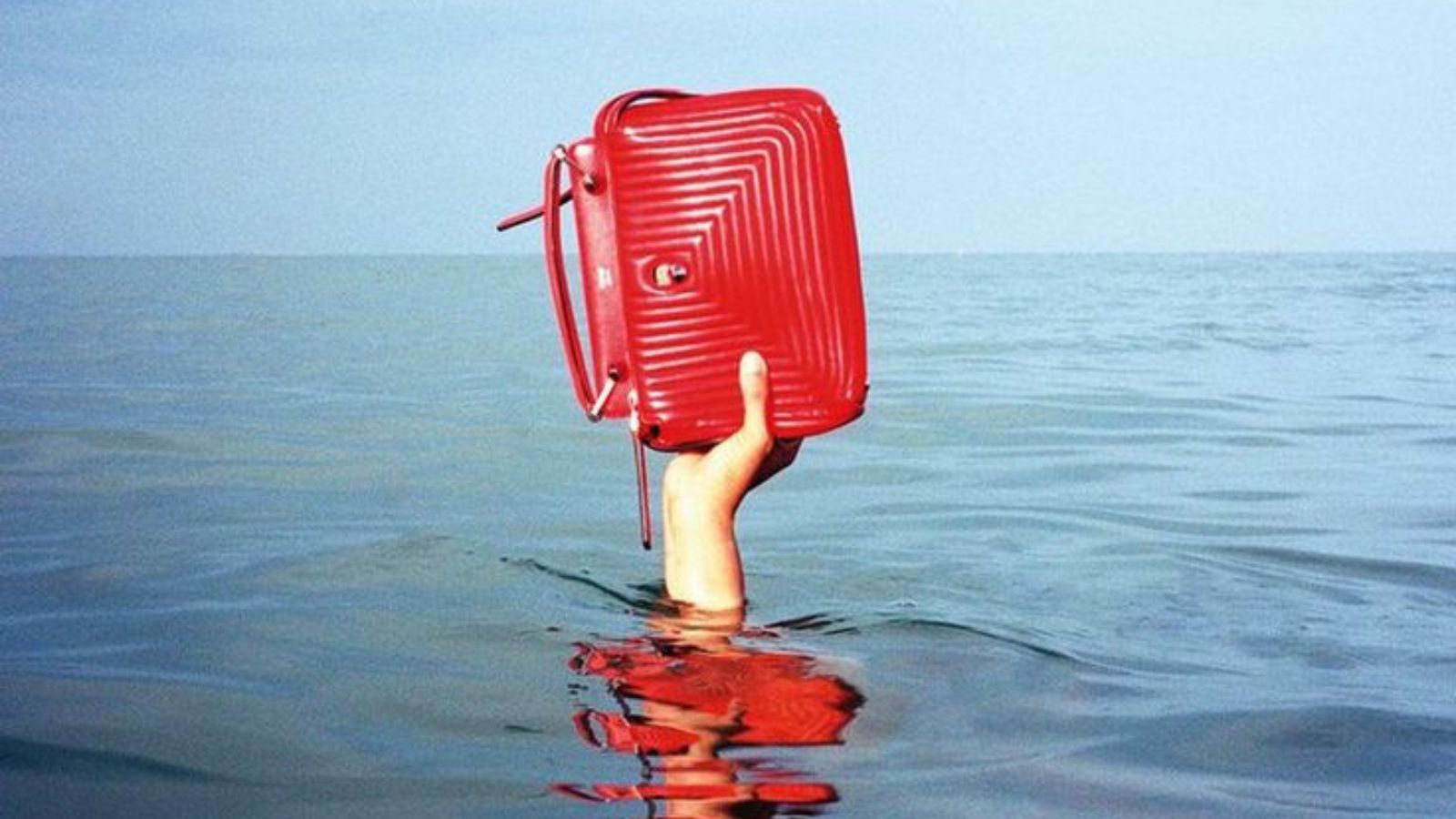Action Speaks Louder
2023.03.23
The clothing and textiles that we make, buy, wear, care for and dispose of are contributors to a wide variety of environmental issues that impact climate change, many of which intersect with one another.
To name a few: both natural and synthetic fabrics cause microfibre pollution in the ocean. The production of leather and viscose lead to deforestation. Dyeing and processing releases toxic chemical pollution into rivers. Waste from the export of used clothing clogs landfills around the world. The list could go on.
Against this backdrop, fashion brands are making more noise than ever about contributing to the solutions of these problems. In 2022, 46% of major brands published a sustainable materials strategy and one in five brands invested in circular solutions like resale, repair and rental. Meanwhile, 100 brands, retailers and suppliers have signed the UNFCCC Fashion Industry Charter for Climate Action, which commits them to reach net zero emissions by 2050.
Behind these efforts towards ‘sustainability’ and ‘circularity’, however, is a bleak fact: we need to limit global warming to 1.5ºC if we want to avoid the most devastating effects of climate change. And an even bleaker fact: the fashion industry needs to reduce its greenhouse gas (GHG) emissions by at least 45% in order to make real progress towards this goal — and it’s currently well behind schedule.
So why is the fashion industry struggling to reduce its emissions? And what can brands do to help drive meaningful change forward?
The problem
The majority of fashion’s emissions are produced in its supply chain by fossil fuel-powered factories
The fashion supply chain is long, complex and opaque. In order to reduce emissions across the whole supply chain at the scale that we need in order to combat the climate crisis, we need to transform the entire energy system behind our clothing and textiles.
This will be a huge challenge. Here’s why.
The fashion supply chain is opaque and fragmented
Almost no piece of clothing or footwear is ever made at a single facility or even a single country. The fashion supply chain is truly global, and it’s extremely fragmented. Production is broken down into different stages, called ‘tiers’, with each tier being carried out at a different facility, in a different country around the world. A single dress will have travelled the world, stopping at different factories, farms, mills, laundries and warehouses long before you buy and wear it.
The 4 tiers of the fashion supply chain are:

- Tier 4: Raw material cultivation and extraction. Eg. cotton farming.
- Tier 3: Material processing. Eg. spinning and weaving yarn into fabric.
- Tier 2: Material production. Eg. dyeing and finishing fabric.
- Tier 1: Product assembly. Eg. cutting and sewing clothing.
Most fashion brands do not own and operate factories, but instead source from international suppliers which specialise in a specific tier of manufacturing. A significant proportion of fashion and textile manufacturing is based in China, South and Southeast Asia and Southern and Eastern Europe.
Brands work with many different facilities to meet their demands for mass production. For example, H&M alone sources from over 2,800 suppliers.
Fossil fuels rule fashion manufacturing
The majority of emissions in the fashion industry come from the supply chain, with an estimated 52% just from Tier 2: material production.

At this stage, textiles are woven or knitted, then dyed, washed and finished, ready to be sewn together into a garment. For fabrics to be treated, they go through ‘wet processing’, a highly emissions-intensive process that usually involves boilers powered by burning fossil fuels like coal and gas.
Sometimes, machinery at these facilities is powered by electricity rather than direct combustion of coal. However, in countries that have unreliable access to renewable energy, production will still need to rely on fossil fuels which power the electricity grid.
Brands’ climate commitments contain loopholes
Although brands do not directly control their suppliers, the emissions produced in the factories, farms and mills they source from are still measured by brands. These are called ‘scope 3’ emissions, which refer to ‘indirect’ emissions that do not come from their owned and operated facilities, or from electricity that they have purchased. Major fashion brands hold an outsized economic influence over their suppliers, and therefore it is their responsibility to provide support for those suppliers to decarbonise.
And yet, meaningfully reducing GHG emissions across their entire supply chain tends to be low on brands’ list of climate targets. Although more brands than ever are engaged in various initiatives to reduce their impact on the environment, and some of them do include commitments to reduce their GHG emissions, such commitments often feature loopholes that brands use to avoid facing the transformational change needed to make significant reductions. These loopholes include:
- Creative accounting
Brands often claim emissions reductions through carbon offsetting schemes, which do not represent genuine climate action in the supply chain. They are also increasingly switching from burning coal to burning biomass. This relies on the combustion of raw materials such as wood pellets, which is highly polluting and can lead to deforestation. - Renewable energy credits
Brands often purchase unbundled Renewable Energy Credits (RECs) rather than directly procuring their own renewable electricity, for example with onsite solar panels or power purchase agreements (PPAs). Research suggests that RECs do not necessarily drive demand for additional renewable electricity, and therefore do not always accurately reflect emissions reductions in the brand’s own supply chain. - Ignoring scope 3
Brands promise to reduce emissions in scopes 1 and 2 only, which refer to owned and operated facilities such as offices and retail stores, rather than the supply chain where most emissions are produced. Unless their climate targets cover scope 3, brands are not taking action where it really counts. - Growing volumes
Brands set intensity-based, rather than absolute, emissions reduction targets, such as ‘50% emissions reduction per unit of product sold’. This means that emissions can actually increase as the company grows in size, profit and production volumes. - Avoiding transparency
Most brands do not invest in full supply chain traceability, which would enable the brand to measure and mitigate emissions at each tier and therefore assess the most effective strategies for decarbonisation. - Certified greenwashing
Many brands participate in voluntary certifications and multi-stakeholder platforms that arguably undermine and distract from the major policy shifts needed to slash emissions.
The solution
Brands must ramp up renewable energy
Ultimately, to address the emissions problem at source, we need to see fashion brands implementing deep decarbonisation across their supply chain, particularly in tier 2, the material production process.
According to the UN, renewable energy supply must be doubled globally in order to limit global warming to 1.5 degrees. Much of this will be driven by the actions of big corporations.
So how can brands decarbonise their supply chain?
According to Stand.earth’s Fossil-free Fashion 2023 Scorecard, in order to make meaningful change, fashion brands need to be fully transparent on GHG emissions across their entire supply chain. Then, they must commit to reducing these emissions by investing in renewable energy and energy efficiency measures. Because decarbonisation also depends on the sourcing countries’ energy mix, they also need to advocate for climate action at a policy level, including strengthening the renewable energy supply in these countries.
Stand.earth’s 2023 scorecard reviewed 43 major fashion brands in their climate efforts, and found only five brands have committed to deploying renewable energy across their supply chain, while the majority of brands have yet to show any signs of meaningfully engaging with suppliers to support them to decarbonise.
Fortunately, the technologies already exist for brands to start taking action today. One promising example is the growth of zero-water dyeing and processing systems, which would enable suppliers to eliminate the need for polluting coal-fired boilers. The D(r)ye Factory of the Future project from Fashion For Good provides insight into the significant emissions savings that could be achieved by scaling up these technologies.
Of course, implementing new technologies will require brands to invest significantly in their suppliers. According to Fashion for Good, there is a $133billion USD funding gap for transitioning from coal combustion to dry processing, but many of these solutions offer an attractive financial return on investment while helping brands to meet their climate targets.
The bottom line: for a truly sustainable fashion industry, we need to accelerate ambition
Beyond individual process improvements from individual brands, the missing piece in a truly sustainable fashion system is the rapid acceleration of renewable energy, which will require the energy landscape of sourcing countries to shift in order to provide reliable, fossil-free electricity to a large number of facilities. Major brands which source from shared regions and even shared facilities are well placed to become powerful advocates for increasing renewable energy supply — but it will require genuine collaboration between fierce competitors.
The challenges involved in decarbonising the fashion supply chain should not be underestimated, but we can no longer wait for weak commitments from brands that fail to meet the urgent action required to limit the most catastrophic impacts of the climate crisis.
Fashion brands and retailers must commit to accelerating a just transition to 100% renewable energy in their supply chain. If they do, it could eliminate 27% of all GHG emissions associated with the fashion industry. The good news is, momentum for decarbonisation is growing from suppliers, policymakers and customers alike. It’s time for the fashion industry to listen up and take action.
Join our movement to hold fashion accountable for its climate impacts.




